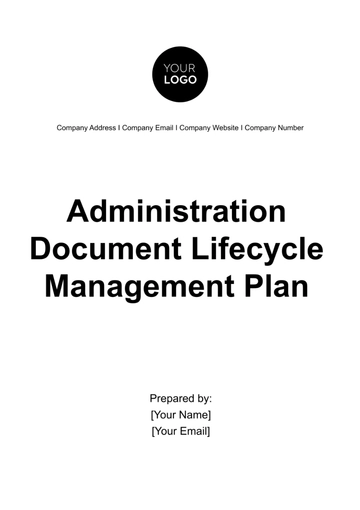Free Car Rental Continuity Plan

I. Executive Summary
The continuity plan for [Your Company Name] is designed to ensure the resilience and sustainability of our operations in the face of various disruptions. This plan outlines the key components necessary to maintain operational effectiveness, customer service, and financial stability during emergencies. The plan covers risk assessment, business impact analysis, emergency response, recovery strategies, and communication protocols.
II. Risk Assessment
Identifying and assessing potential risks is the first step in developing an effective continuity plan. This section details the types of risks that could impact our operations and the likelihood and potential impact of these risks.
Types of Risks and Mitigation Strategies
Identifying various risks that could impact operations is crucial for developing effective mitigation strategies. This section outlines the types of risks that [Your Company Name] may face and strategies to mitigate their impact.
Natural Disasters: Natural disasters such as earthquakes, floods, and hurricanes can cause significant damage to our facilities and disrupt our ability to serve customers. Preparing for these events involves securing facilities, establishing evacuation plans, and ensuring our insurance policies cover potential losses.
Mitigation Strategies:
Risk Assessment and Preparedness: Conduct regular risk assessments to identify vulnerable areas and implement structural reinforcements where necessary.
Emergency Response Plans: Develop and regularly review emergency response plans that include evacuation procedures, emergency contacts, and alternative operational sites.
Insurance Coverage: Maintain comprehensive insurance coverage that includes business interruption insurance to mitigate financial losses during prolonged disruptions.
Technological Failures: IT-related issues like system outages or cyber-attacks can halt our operations. Implementing robust cybersecurity measures, regular system backups, and having a disaster recovery plan in place are essential to mitigate these risks.
Mitigation Strategies:
Cybersecurity Measures: Implement robust cybersecurity protocols, including firewalls, encryption, and regular security audits to protect sensitive data.
Data Backup and Recovery: Establish regular data backups and recovery procedures to ensure quick restoration of critical systems and data in case of an IT failure.
Incident Response Plan: Develop and train employees on an incident response plan to swiftly contain and mitigate the impact of cyber incidents.
Human Factors: Employee-related issues such as illness, strikes, or human error can disrupt operations. Strategies include cross-training staff, developing comprehensive employee health programs, and establishing clear operational procedures to reduce the impact of these disruptions.
Mitigation Strategies:
Employee Training and Cross-Training: Implement comprehensive training programs to ensure employees are well-versed in their roles and capable of performing multiple functions.
Health and Safety Protocols: Establish health and safety protocols to minimize the spread of illnesses and ensure a safe working environment.
Employee Engagement: Foster a positive work culture that promotes employee satisfaction and reduces the likelihood of strikes or work stoppages.
Supply Chain Disruptions: Delays in vehicle deliveries or parts shortages can affect fleet availability. Building strong relationships with multiple suppliers, maintaining adequate inventory levels, and having contingency plans for alternative suppliers can help manage these risks.
Mitigation Strategies:
Supplier Diversity: Maintain relationships with multiple suppliers to reduce dependency on a single source and mitigate the impact of supplier failures.
Inventory Management: Implement robust inventory management practices to ensure adequate stock levels of vehicles and parts.
Contractual Agreements: Establish clear contractual agreements with suppliers that include contingency plans for supply disruptions and penalties for non-compliance.
Financial Risks: Economic downturns, fuel price fluctuations, and other financial challenges can affect our profitability. Effective financial management practices, such as maintaining emergency funds, diversifying revenue streams, and continuously monitoring economic indicators, are critical to mitigate these risks.
Mitigation Strategies:
Financial Planning and Forecasting: Conduct regular financial planning and forecasting to anticipate potential economic challenges and adjust budgets accordingly.
Diversified Revenue Streams: Explore and develop diversified revenue streams to reduce dependency on a single source of income.
Cash Flow Management: Maintain a robust cash flow management system to ensure liquidity during periods of financial uncertainty.
III. Business Impact Analysis
A business impact analysis (BIA) helps us understand the potential effects of disruptions on our operations. This section outlines the critical functions and processes that must be maintained to ensure business continuity.
Critical Functions
Identifying critical functions ensures that essential operations continue even during disruptions.
Fleet Management: Ensuring the availability and maintenance of vehicles is essential for continuing operations. This includes routine maintenance, emergency repairs, and efficient fleet scheduling to meet customer demand.
Customer Service: Providing uninterrupted customer service through various channels (online, phone, in-person) is vital. This involves maintaining a responsive customer service team, ensuring call center operations, and leveraging digital platforms to handle customer inquiries and reservations.
Financial Operations: Managing finances, including billing, payroll, and vendor payments, must continue without disruption. Implementing secure financial systems and backup procedures ensures continuity in financial operations.
IT Infrastructure: Maintaining IT systems and data integrity is crucial for operational efficiency and customer service. Regularly updating software, performing routine system checks, and having a disaster recovery plan for IT are essential practices.
Supply Chain Management: Ensuring a steady supply of vehicles and parts is necessary for uninterrupted service. This involves working closely with suppliers, monitoring inventory levels, and having contingency plans for supply chain disruptions.
IV. Emergency Response
Effective emergency response protocols are crucial for managing immediate crises. This section outlines our emergency response strategies, including communication plans and safety procedures.
Response Strategies
Implementing robust emergency response strategies ensures swift and effective action during crises.
Response Activity | Frequency | Responsibility |
|---|---|---|
Emergency Contacts | Updated Monthly | Administration Department |
Safety Procedures | Regular Drills | Safety Officers |
Communication Plan | Quarterly Reviews | Communications Team |
Emergency Contacts: Keeping an updated list of emergency contacts ensures that we can quickly reach key personnel, emergency services, and suppliers in the event of a crisis. This list should be reviewed and updated monthly to ensure accuracy.
Safety Procedures: Establishing clear safety procedures, including evacuation plans, emergency shutdown protocols, and first aid measures, ensures the safety of employees and customers. Regular drills help ensure that everyone is familiar with these procedures.
Communication Plan: A well-defined communication plan ensures that information is disseminated quickly and accurately during emergencies. This plan should include protocols for internal and external communication, designating spokespersons, and using multiple channels to reach all stakeholders.
V. Recovery Strategies
Developing effective recovery strategies is essential for restoring normal operations as quickly as possible after a disruption. This section outlines our approach to recovering from disruptions, focusing on minimizing downtime, preserving critical functions, and ensuring a smooth transition back to full operational capacity. Recovery strategies involve detailed planning and resource allocation to address the immediate aftermath of a disruption and facilitate long-term recovery.
Recovery Approaches
Adopting well-defined recovery approaches helps restore operations efficiently. Each approach focuses on specific aspects of recovery, ensuring that all critical areas are addressed comprehensively.
Data Backup and Restoration: Regular data backups are essential for safeguarding critical information against loss or corruption. In the event of IT disruptions, a well-documented data restoration plan allows us to recover data quickly and resume normal operations.
Importance: Protects against data loss and ensures business continuity by enabling swift data recovery.
Action Plan: Daily backups should be automated, with regular testing of backup integrity and restoration procedures to ensure data can be recovered effectively when needed.
Facility Repairs: Having a plan for rapid facility repairs helps minimize operational downtime caused by physical damage to facilities. This includes agreements with contractors, access to repair materials, and predefined repair protocols.
Importance: Ensures that any physical damage is quickly addressed, allowing for a faster return to normal operations.
Action Plan: Maintain relationships with reliable contractors, keep an inventory of essential repair materials, and regularly review and update the facility repair protocols.
Temporary Operations: Establishing temporary operational procedures allows us to continue providing essential services while recovery efforts are underway. This might include remote work arrangements, temporary relocation of staff, or deploying mobile service units.
Importance: Maintains service continuity and minimizes disruptions to customers and operations.
Action Plan: Develop and test temporary operational procedures, ensuring all staff are trained and familiar with these protocols. Identify potential locations for temporary operations and ensure necessary resources are available.
Alternative Worksites: Identifying and preparing alternative worksites for employees ensures that work can continue if primary facilities are unusable. This involves setting up secondary locations equipped with necessary infrastructure.
Importance: Provides a seamless transition for employees, reducing downtime and maintaining productivity.
Action Plan: Regularly review and update the list of alternative worksites, ensuring they are equipped and ready for immediate use. Conduct semi-annual drills to test the effectiveness of the transition process.
Resource Allocation: Ensuring adequate allocation of resources, including staff, equipment, and funds, is crucial for effective recovery efforts. This involves detailed planning and budgeting to ensure that resources are readily available when needed.
Importance: Facilitates efficient and effective recovery operations by ensuring necessary resources are on hand.
Action Plan: Conduct quarterly reviews of resource needs and availability, adjust budgets as necessary, and maintain a contingency fund specifically for recovery efforts.
Vendor and Supplier Coordination: Coordinating with vendors and suppliers ensures that we continue to receive the supplies and support needed during the recovery period. This includes maintaining open communication and establishing agreements for priority service in emergencies.
Importance: Ensures a steady supply of necessary goods and services, reducing the impact of supply chain disruptions on recovery efforts.
Action Plan: Regularly communicate with vendors and suppliers to review and update contingency plans. Conduct quarterly reviews to ensure all agreements are current and effective.
VI. Communication Protocols
Effective communication is vital during and after a disruption. This section outlines our communication protocols to ensure all stakeholders are informed and coordinated.
Communication Strategies
Implementing robust communication strategies ensures clarity and coordination during disruptions.
Communication Activity | Frequency | Responsibility |
|---|---|---|
Internal Communication | Daily During Crisis | Human Resources |
External Communication | As Needed | Public Relations |
Media Relations | As Needed | Marketing Department |
Internal Communication: Developing protocols for communicating with employees ensures that everyone is informed about the status of the emergency and recovery efforts. This includes daily updates during a crisis and clear instructions on safety and operational procedures.
External Communication: Creating strategies for informing customers, suppliers, and other stakeholders helps maintain transparency and trust. This includes timely updates on service availability, recovery progress, and any changes to business operations.
Media Relations: Establishing a media relations plan helps manage public perception and protect the company's reputation. This involves preparing press releases, designating spokespersons, and coordinating with media outlets to ensure accurate and consistent messaging.
VII. Conclusion
The continuity plan for [Your Company Name] is designed to ensure that our business can withstand and quickly recover from various disruptions. By identifying potential risks, understanding their impact on critical functions, and implementing robust response, recovery, and communication strategies, we are well-prepared to maintain operational effectiveness and customer service during emergencies. This plan underscores our commitment to resilience, customer satisfaction, and long-term success, positioning [Your Company Name] as a reliable and responsive service provider in the face of any challenge.
- 100% Customizable, free editor
- Access 1 Million+ Templates, photo’s & graphics
- Download or share as a template
- Click and replace photos, graphics, text, backgrounds
- Resize, crop, AI write & more
- Access advanced editor
Ensure business resilience with the Car Rental Continuity Plan Template, available exclusively on Template.net. This editable and customizable template, fully compatible with our Ai Editor Tool, enables you to design effective continuity plans for your car rental business. The template helps in identifying critical business functions and developing contingency plans.
You may also like
- Finance Plan
- Construction Plan
- Sales Plan
- Development Plan
- Career Plan
- Budget Plan
- HR Plan
- Education Plan
- Transition Plan
- Work Plan
- Training Plan
- Communication Plan
- Operation Plan
- Health And Safety Plan
- Strategy Plan
- Professional Development Plan
- Advertising Plan
- Risk Management Plan
- Restaurant Plan
- School Plan
- Nursing Home Patient Care Plan
- Nursing Care Plan
- Plan Event
- Startup Plan
- Social Media Plan
- Staffing Plan
- Annual Plan
- Content Plan
- Payment Plan
- Implementation Plan
- Hotel Plan
- Workout Plan
- Accounting Plan
- Campaign Plan
- Essay Plan
- 30 60 90 Day Plan
- Research Plan
- Recruitment Plan
- 90 Day Plan
- Quarterly Plan
- Emergency Plan
- 5 Year Plan
- Gym Plan
- Personal Plan
- IT and Software Plan
- Treatment Plan
- Real Estate Plan
- Law Firm Plan
- Healthcare Plan
- Improvement Plan
- Media Plan
- 5 Year Business Plan
- Learning Plan
- Marketing Campaign Plan
- Travel Agency Plan
- Cleaning Services Plan
- Interior Design Plan
- Performance Plan
- PR Plan
- Birth Plan
- Life Plan
- SEO Plan
- Disaster Recovery Plan
- Continuity Plan
- Launch Plan
- Legal Plan
- Behavior Plan
- Performance Improvement Plan
- Salon Plan
- Security Plan
- Security Management Plan
- Employee Development Plan
- Quality Plan
- Service Improvement Plan
- Growth Plan
- Incident Response Plan
- Basketball Plan
- Emergency Action Plan
- Product Launch Plan
- Spa Plan
- Employee Training Plan
- Data Analysis Plan
- Employee Action Plan
- Territory Plan
- Audit Plan
- Classroom Plan
- Activity Plan
- Parenting Plan
- Care Plan
- Project Execution Plan
- Exercise Plan
- Internship Plan
- Software Development Plan
- Continuous Improvement Plan
- Leave Plan
- 90 Day Sales Plan
- Advertising Agency Plan
- Employee Transition Plan
- Smart Action Plan
- Workplace Safety Plan
- Behavior Change Plan
- Contingency Plan
- Continuity of Operations Plan
- Health Plan
- Quality Control Plan
- Self Plan
- Sports Development Plan
- Change Management Plan
- Ecommerce Plan
- Personal Financial Plan
- Process Improvement Plan
- 30-60-90 Day Sales Plan
- Crisis Management Plan
- Engagement Plan
- Execution Plan
- Pandemic Plan
- Quality Assurance Plan
- Service Continuity Plan
- Agile Project Plan
- Fundraising Plan
- Job Transition Plan
- Asset Maintenance Plan
- Maintenance Plan
- Software Test Plan
- Staff Training and Development Plan
- 3 Year Plan
- Brand Activation Plan
- Release Plan
- Resource Plan
- Risk Mitigation Plan
- Teacher Plan
- 30 60 90 Day Plan for New Manager
- Food Safety Plan
- Food Truck Plan
- Hiring Plan
- Quality Management Plan
- Wellness Plan
- Behavior Intervention Plan
- Bonus Plan
- Investment Plan
- Maternity Leave Plan
- Pandemic Response Plan
- Succession Planning
- Coaching Plan
- Configuration Management Plan
- Remote Work Plan
- Self Care Plan
- Teaching Plan
- 100-Day Plan
- HACCP Plan
- Student Plan
- Sustainability Plan
- 30 60 90 Day Plan for Interview
- Access Plan
- Site Specific Safety Plan




